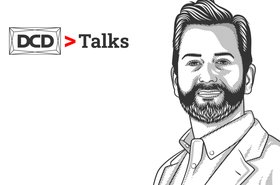Pressure is on the entire industry to start taking sustainability more seriously, but how can we do that without fully appreciating the full breadth of factors that can impact this?
The fact is, sustainability isn’t just about what we do as individuals or as companies. It is also about the companies we work with, all the way down the supply chain, and the further away from it we get the harder it is to control.
Schneider Electric’s director of strategy, Adam Compton, is all too familiar with the sustainability issue.
We spoke to Compton at our DCD>Connect New York event to get some insight into how Schneider Electric views the sustainability issue, and the steps we must take to mitigate it.
“We identified five different categories to try to break the whole big topic down,” explained Compton, “those were energy efficiency, greenhouse gas, waste, water, and biodiversity.”
But one of those five categories is much harder to control than the others. Greenhouse gas emissions.
Greenhouse gases, such as carbon dioxide, methane, and nitrous oxide, trap heat in the Earth’s atmosphere and ultimately contribute to the warming of the planet. Greenhouse gas emissions can be further broken down into Scope 1, 2, and 3, a distinction which is essential to improving sustainability, according to Compton.
“Scope 1 is the only direct greenhouse gas emission category within scope, one, two, and three. What it really refers to is the operation of your data centrer and what emissions you are emitting as a result of your daily operations. It's usually, by the way, less than half a percent of all the scopes’ emissions.”
It is somewhat unfortunate that Scope 1 is the smallest, as this is the easiest to fix. You can make the decision to turn to greener power sources or improve construction efficiency relatively easily. It is the ‘Scopes’ that remain out of your grasp that are more challenging.
“Scope 2 are indirect emissions. So what that means is that it isn't something you’re directly doing, but something you purchased. In this case, it has everything to do with the energy source that you're using in order to power your data center and your operations. Depending on your approach, you could use as little as zero or be fully responsible for all of that scope, too,” said Compton.
“Scope 3 is also an indirect emission, and it also has to do with things you've purchased. But in this case, it's a lot of manufactured items.”
According to Compton, Scope 3 can be further broken down into things like the emissions produced by employees commuting, or the fuel being put into a generator and what it took to produce that fuel in the first place. It can also be capital goods, or the manufactured materials inside the data center. From mining materials, to production, all the way through to delivery, for every action largely outside of an operators control, there is a carbon footprint that follows..
When you begin to think of Scope 3 like that, it can feel like an entirely impossible task to overcome. One thing is for certain, without a degree of transparency up and down the supply chain, Scope 3 would be little more than guesswork.
The industry is being encouraged, gently or not-so-gently, to report more openly about its carbon footprint, and as Compton points out, there are some taking issue with this, as just reporting on your sustainability doesn’t actually improve it.
“Am I actually making any difference in how much carbon there is in the world and how much carbon is in my data center just by measuring it? The answer to that is no, you haven't changed that footprint. But I guess we would argue that by measuring it, we start to now go on the road of knowing what's happening, and then applying different pressures so that the natural tendency in competition is to drive that number down and make it more attractive. And thus, we do actually make an impact,” argued Compton.
We can see this in practise when we turn to the hyperscalers. Microsoft wants to cut its carbon emissions in half by 2030 – a very impressive target. But Google is saying that it wants to be net zero, up and down the value chain, by 2030 – arguably an even more aggressive goal.
When people and companies start taking a stance on the sustainability issue, the competitors risk losing out by staying behind. As more people are openly committing to a sustainability goal, that has a ripple effect on the whole industry, and makes it easier to make smart choices up and down the supply chain.
Dive into the Scope 3 discussion further by watching the DCD>Talk here





